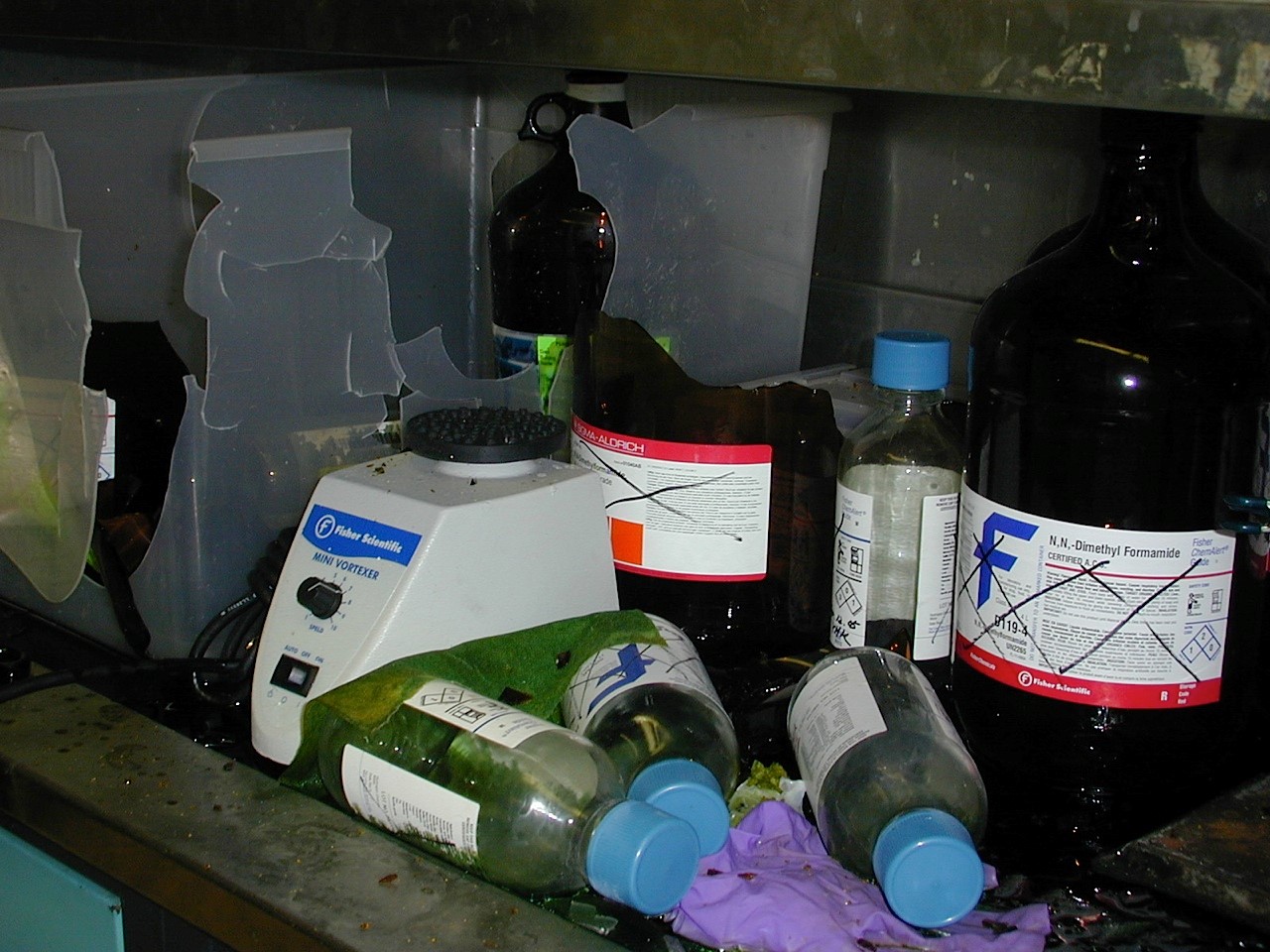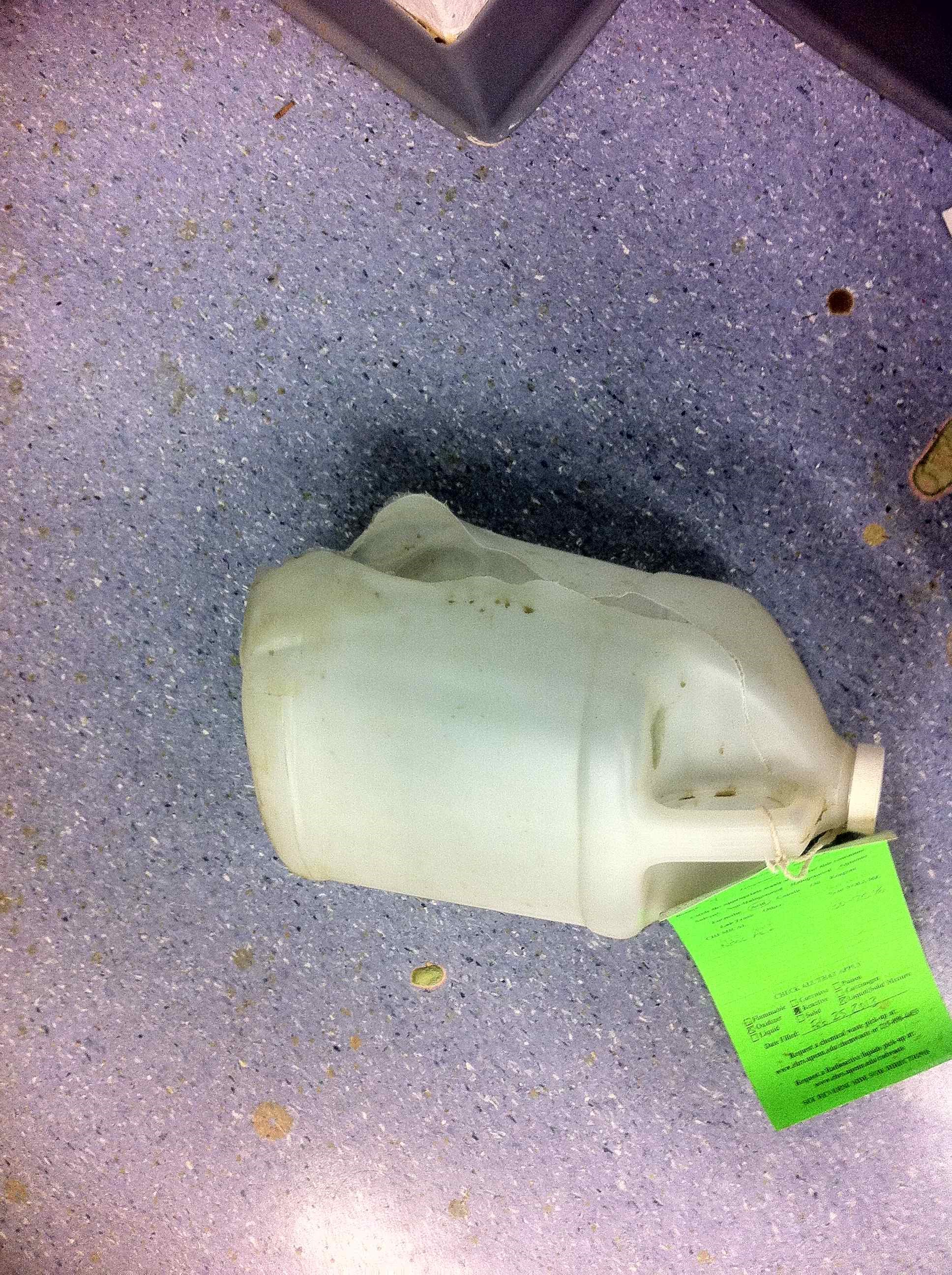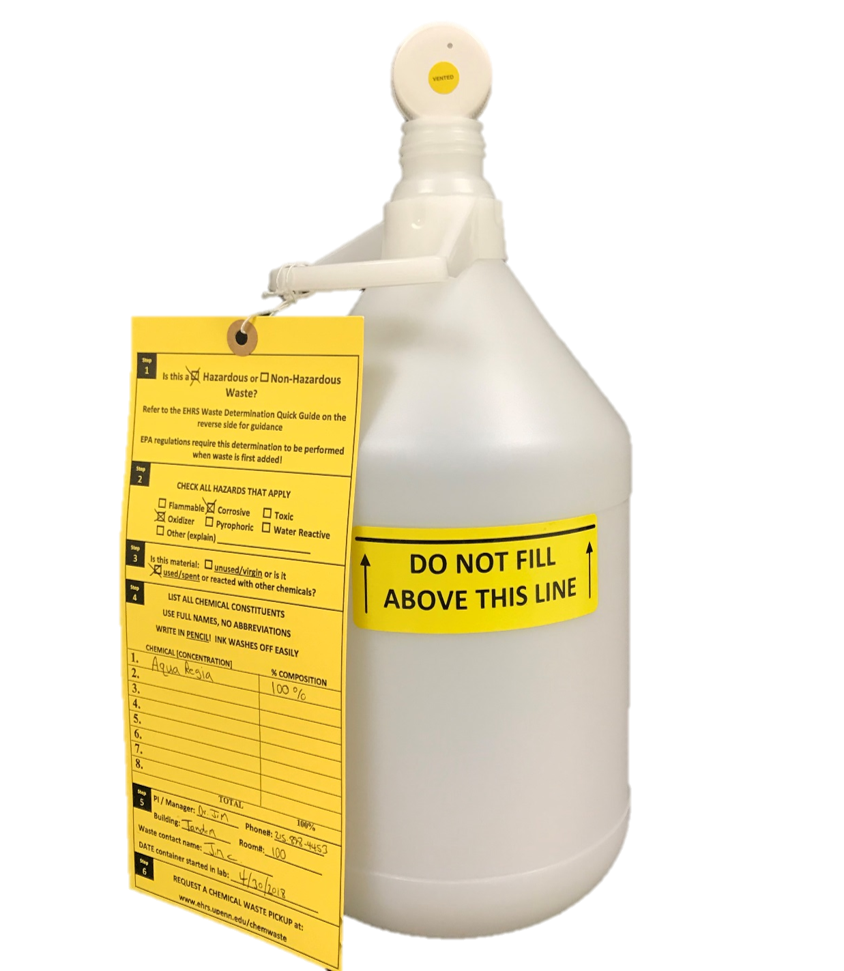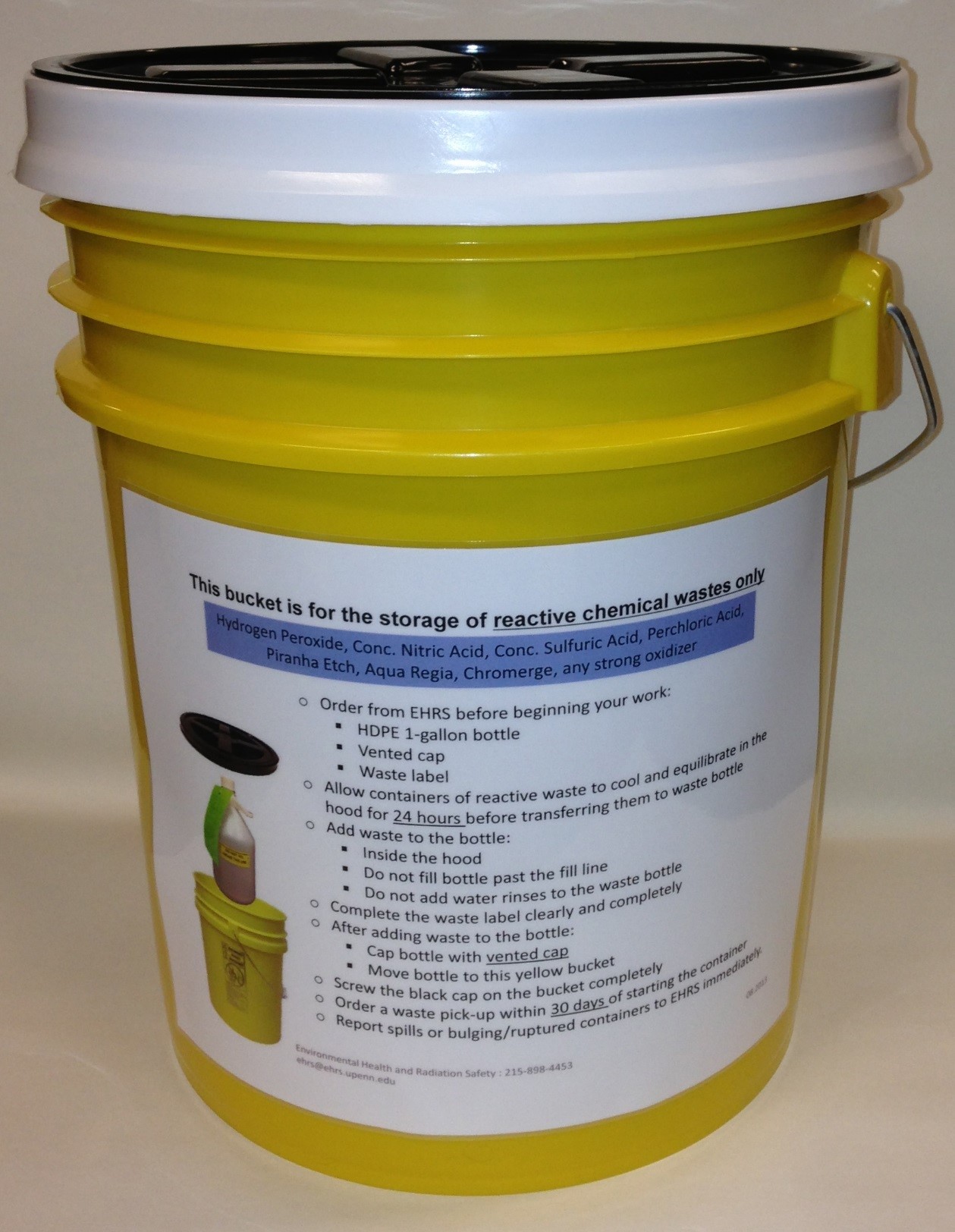Last Revised: August 26, 2022
Handling of Chemical Waste Containing Hydrogen Peroxide and Strong Oxidizing Acids
The following chemicals and mixtures are hazardous because of their strong corrosivity and the propensity of waste solutions to evolve gas due to oxidation of organics or decomposition:
- Hydrogen Peroxide
- Nitric Acid
- Sulfuric Acid
- Perchloric Acid
- Piranha Etch (see Fact Sheet: Piranha Solution Preparation for more information)
- Aqua Regia
- Chromerge
- Methyl methacrylate (MMA) (see Fact Sheet: MMA Embedding for more information)
- Any strong oxidizer
EHRS has responded to multiple incidents of container ruptures involving these waste materials. These ruptures can cause serious injuries to lab personnel.


In addition to the guidance provided in the Standard Operating Procedure for Corrosive Chemicals, the following steps must be taken when collecting oxidizing or gas-producing wastes:
- Allow all solutions to cool to room temperature in the hood for 24 hours before adding them to the waste bottle.
- Collect this waste separately from all other waste streams. Do not combine multiple types of waste in the same container with the oxidizing liquids.
- Only add waste to the container while it is in the fume hood. Add liquids slowly and carefully using a funnel to prevent spills. Never fill the container more than two-thirds full.
- If you need to rinse your container with water after completely emptying it into the waste container, you may pour the rinsate down the drain, flushing with copious amounts of water. Do not pour this water rinse into the waste bottle. An exothermic reaction will occur if you pour water into acid.

- These wastes must never be stored in glass containers. Use only the HDPE (plastic) bottles provided by EHRS and the special vented cap. Before you begin work with any of these materials, request a waste bottle and vented cap from EHRS using the Chemical Waste Pickup Form.
- Label the bottle using a yellow chemical waste label, which lists all components of the waste stream using full chemical names. Date the waste tag when the container is started and request a waste pickup within 1 month.
- The waste bottle must be stored in the satellite waste accumulation area in a yellow 5-gallon bucket (shown below) with a closed screw top lid secured. Request buckets from EHRS using the Chemical Waste Pickup Form.
- Bulging or ruptured containers and spills must be reported to EHRS immediately: 215-898-4453
